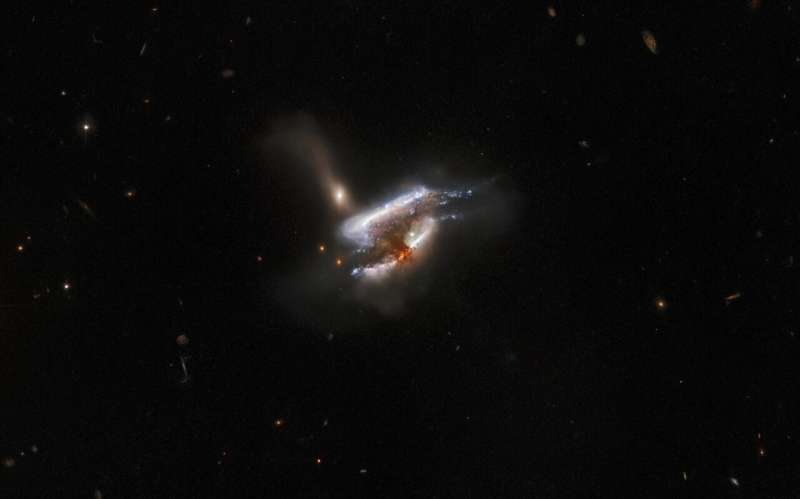
The distant galaxy merger IC 2431 lies 681 million light-years from Earth in the constellation Cancer and is depicted in this image.
The NASA/ESA Hubble Space Telescope has captured what appears to be a triple galaxy merger in progress, as well as a tumultuous mixture of star formation and tidal distortions.
A thick cloud of dust obscures the center of the image, though light from a background galaxy is piercing its outer extremities.
The image is from a series of Hubble observations looking at weird and wonderful galaxies.
Astronomers used Hubble's powerful Advanced Camera for Surveys to take a closer look at some of the more unusual galaxies that volunteers identified.
More than 100,000 people volunteered to help in the creation of the largest galaxy census ever carried out.
The project achieved what would have been years of work for a professional astronomer in 175 days and has led to a steady stream of similar citizen science projects.
The discovery of entirely new types of compact star-forming galaxies, as well as the largest ever studies of galaxy mergers and tidal dwarf galaxies, have been included in the later Galaxy Zoo projects.
Citation: Image: Hubble captures swirling galactic trio (2022, February 19) retrieved 19 February 2022 from https://phys.org/news/2022-02-image-hubble-captures-swirling-galactic.html This document is subject to copyright. Apart from any fair dealing for the purpose of private study or research, no part may be reproduced without the written permission. The content is provided for information purposes only.